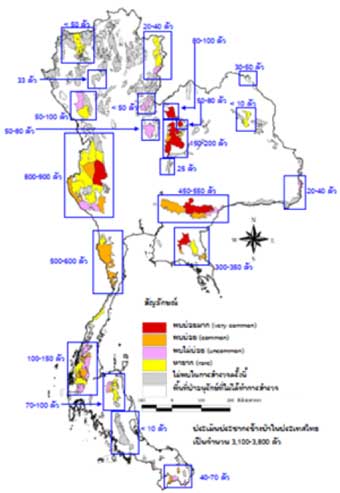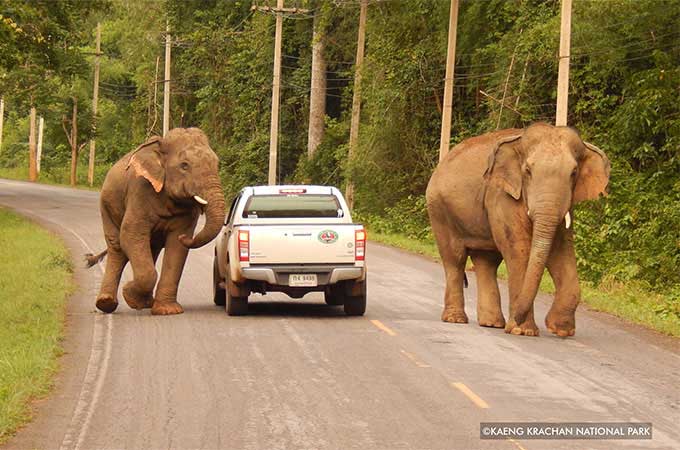Asian Elephant (Elephas maximus) is one out of five important living landscape species (i.e. Siamese Crocodile (Crocodylus siamensis), Spectacled Langur (Trachypithecus obcurus), Asiatic Black Bear (Ursus thibetanus) and Blyth’s or Giant River Frog (Limnonectes blythii)) found in Kaeng Krachan National Park (KKNP).
Moreover, the Department of National Parks, Wildlife and Plant Conservation (DNP) reported that 3,100 - 3,800 wild elephants inhibit in 68 protected areas of Thailand, including 30 wildlife sanctuaries and 38 national parks.

The distribution of wild elephant from a survey in Thailand shows protected areas that elephants frequently observed are represented in red color and protected areas that elephant was absent are represented by grey color (DNP).
According to the elephant distribution survey which in collaboration between Wildlife Conservation Society (WCS) Thailand program and Kaeng Krachan National Park during 2003-2004, found that main threat to wild elephants is human disturbance such as poaching and clearing of elephant habitat for agricultural use. Consequently, they were mainly distributed only in lower part of KKNP. In addition, Human-elephant Conflict (HEC) has long been addressed in some areas adjacent to KKNP border through crop damage incidences.
Therefore, WCS in collaboration with KKNP has established elephant conservation measure within KKNP which leads to establishment of several projects such as strengthening law enforcement—smart patrol system. Moreover, we have been continuously helped villagers improving an appropriate HEC mitigation scheme since 2005.
See more of elephant conservation in Kaeng Krachan National Park

Elephant Conservation: Distribution, Crop Raiding Monitoring and Human-Elephant conflict (HEC) Management